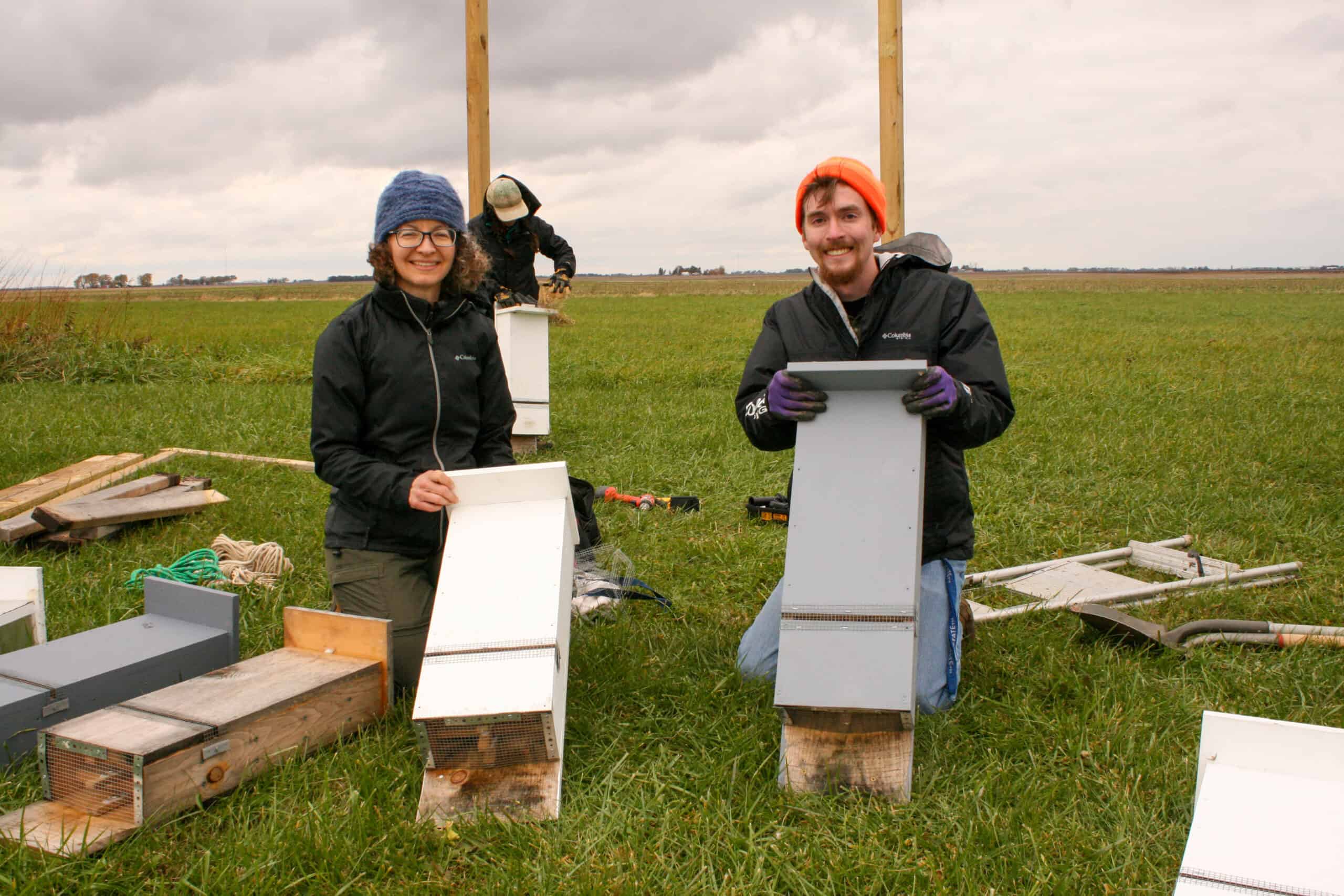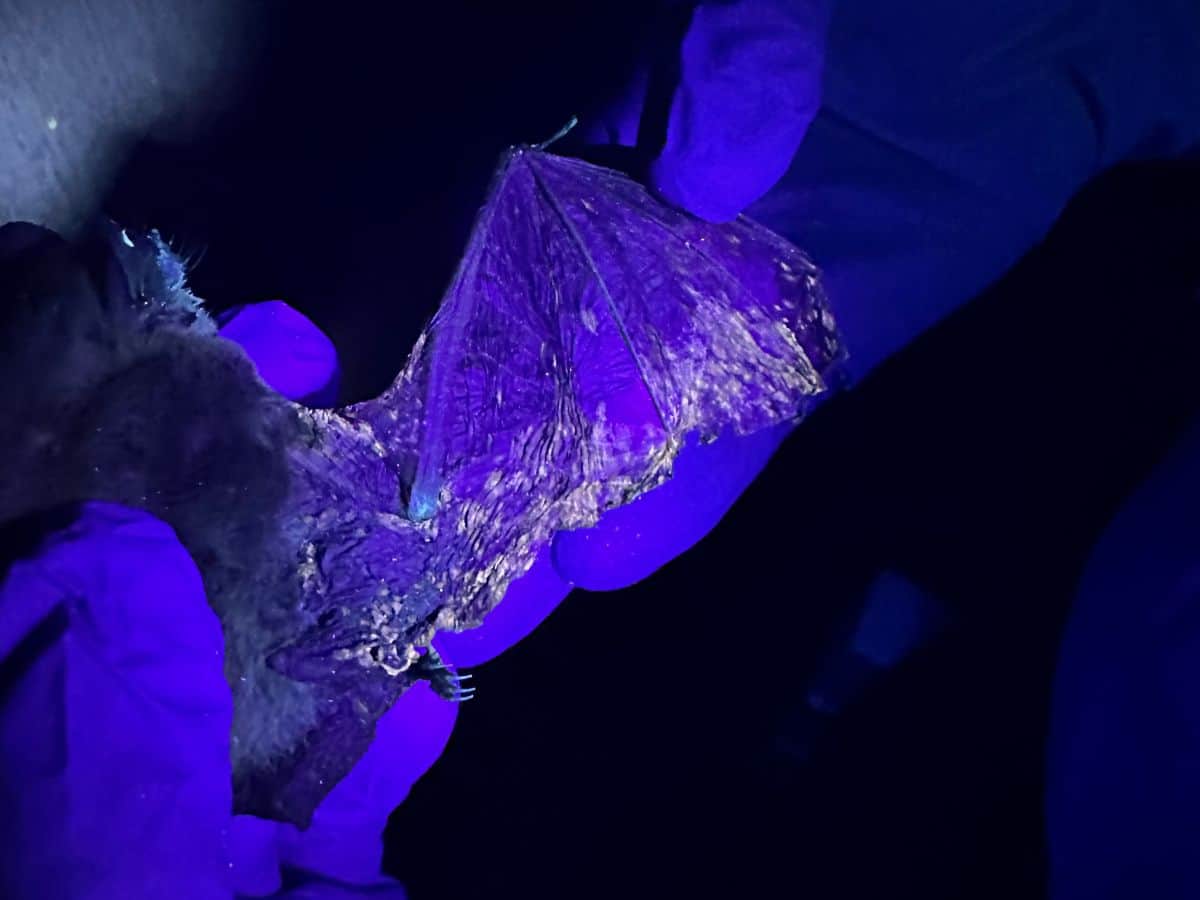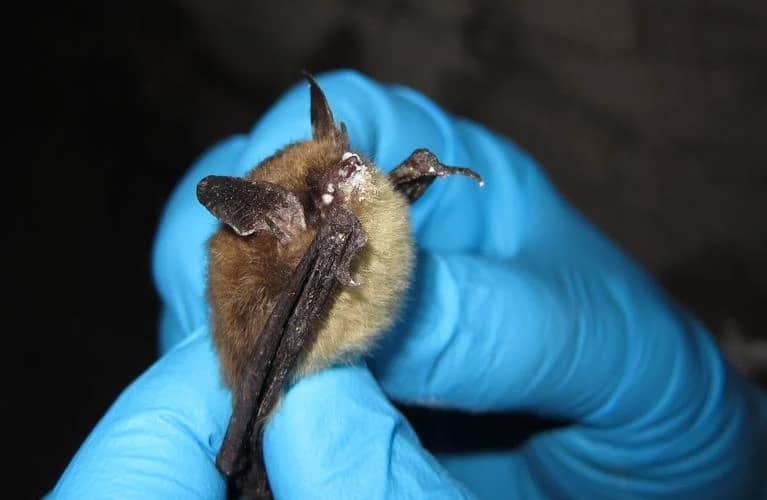Share this article
Building a better bat box
Artificial bat roosts have downsides, but some tweaks can improve them
Conservationists sometimes deploy artificial roosts to provide bats roosting habitat or bring them back onto the landscape. Some landowners use them to attract bats as natural pest killers. But researchers recently posited that these bat boxes might be dangerous to bats in certain scenarios—and some designs work better than others.
In some cases, the team proposes that boxes may create ecological traps, drawing bats into less-than-ideal locations or roosting conditions, the same way a backyard birdfeeder near a big picture window could put birds in jeopardy of window collisions.
“We should be mindful of the risks we may be exposing bats to when we provide them with artificial roosts,” said Joy O’Keefe, assistant professor and wildlife extension specialist in Natural Resources and Environmental Sciences at the University of Illinois Urbana-Champaign.
Bat boxes refer to any sort of structure designed and developed as roosts for bats. Typically, they have either a single or multiple chambers, with entrances at the bottom that allow bats to fly up and jump out at night.
Conservationists usually determine if artificial roosts are working by how many bats are inside. “They’re not necessarily looking at the health of roost occupants,” said Reed Crawford, a PhD candidate in the Program in Ecology, Evolution and Conservation Biology at the University of Illinois Urbana-Champaign.
But Crawford wondered how well these roosts were serving bats. He led a comprehensive investigation published in Conservation Biology with O’Keefe, taking a closer look at bat boxes, their associated risks and research avenues to develop better practices for using them.
“You want to make sure the bats that are using these structures are healthy, and health is a very difficult thing to define,” Crawford said.
As the team surveyed all the literature they could find on artificial bat roosts, they noticed a lack of rigorous science. Many unknowns remain regarding overheating, parasites, predation and the consequences of attracting bats to low-quality landscapes.
O’Keefe’s lab has researched best practices. She and her colleagues have published work showing the design factors that make bat boxes lethally hot. They’ve also noted when bats were using artificial roosts even when there was suitable habitat nearby. Sometimes, bat boxes are put up in forests where they aren’t needed. Other times, they’re put in places without the natural areas bats need to forage. The researchers point out the importance of considering the surrounding landscape before installing boxes.
“There was a lot of learning from our own experiences working with bat boxes in this region,” O’Keefe said, “and a lot of discussion amongst ourselves and amongst colleagues.”
The team recommended research into new box designs that would be more resistant to heat fluctuations. Dark boxes, which are often recommended, can overheat, they found. O’Keefe and her colleagues are working on new designs to improve thermal features. One design has water in the walls, keeping it cooler during the day and warmer at night.
Bat boxes can be helpful in certain conditions, O’Keefe said, but they shouldn’t be considered a failsafe, long-term solution to the loss of mature forests, where large dead and damaged trees offer space for bats to roost.
“I think we should be thinking about them as a bridge while we restore ideal natural roosting habitat,” O’Keefe said.
Header Image: Joy O'Keefe (left) and Reed Crawford (right) with bat boxes installed for a previous study. Credit: University of Illinois Urbana-Champaign








